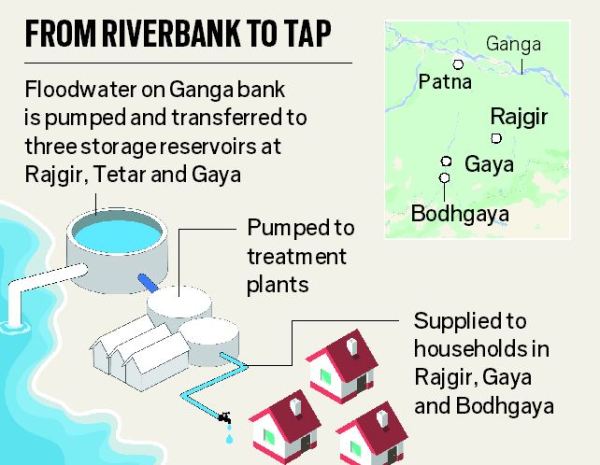Monkeys rob people off their sleep in Bihar, forest dept fails to provide succour
4 min readMonkeys are wreaking havoc in various districts of Bihar as the forest and environment department is clueless on how to deal with the man-animal conflict.
Though the department has not undertaken any study on the monkey menace, data culled from government health facilities reveal that around 200 people have fallen victim to simian bite in Bhojpur, Bhagalpur and Darbhanga last month.
Add to it an average five cases reported from Gopalganj and Siwan districts every month and 20 from Bhabua in Kaimur district of southwest Bihar in the recent past, and the problem looks grievous.
Go to any of these districts and people narrate their litany of woes.
“Monkeys frequently invade residential localities, often leaving a trail of destruction. The situation is such that we have to keep a monthly provision of Rs 2,000 to Rs 3,000 in our household budget to repair and replace items the simians damage,” Rajkumari Pandey, a homemaker in New Area Babu Bazar locality of Ara said.
“The younger ones often damage water pipes by swinging on them, resulting in snapping of supply. Only a few months ago, monkeys damaged water pipes and water tank and we had to spend Rs 15,000 on replacing them,” she said.
Babu Bazar, New Area Babu Bazar, Nawada, MP Bagh, Maulabag, Madan Ji Ka Hata, Karman Tola, New Karman Tola, Station Road and Mill Road are some of the worst affected areas in Ara.
“We cannot go to the terrace of our house without a stick for fear of monkeys,” said Rajnandan Mishra, 62, of PTC Colony, Darbhanga.
Two years ago, a monkey attacked Mishra and he had to spend Rs 4,000 to get anti-rabies vaccine and a booster dose.
Banglagarh, Sotiline, Bela Garden, Kadirabad, Rajkumar Ganj, Laxmi Sagar, University campus and Mirzapur are among the worst-hit localities in Darbhanga.
Dr Chitraranjan Roy, head, department of preventive and social medicines at Darbhanga Medical College and Hospital (DMCH), said the hospital received on an average four to five cases of monkey bite daily. This figure could be much higher in the district as many patients also visit the district hospital and private nursing homes for treatment, he added.
“Cases of monkey bite are on the rise,” said Dr Ram Charitra Mandal, medical superintendent of the Jawaharlal Nehru Medical College Hospital (JLNMCH), Bhagalpur. He said 11 victims of monkey bite were provided treatment at the hospital so far this month.
Government health facilities in districts are not well equipped to tackle such menace. “A monkey bit my daughter last December and we could not get anti-rabies vaccine at the sadar hospital and instead had to purchase it from the market. Monkeys raid our house and shop almost daily,” said Sangita Devi, 32, a homemaker, whose husband runs a general store in the Bhabua.
Forest department helpless
Despite the state-wide issue, the travesty, however, is that the forest department does not have any plan on how to contain the menace.
The department, at best, has been doing firefighting by catching simians from a densely populated area and dropping them off at a secluded place, only for them to either return, or saunter into a neighbouring district.
Divisional forest officer (DFO), Gopalganj, HK Roy, who also looks after Siwan district, was candid enough to accept that there was no permanent solution in sight.
“We only provide temporary relief by shifting the deviant simians to some other place. Some return with a vengeance, others swing their way to adjoining districts,” said Roy.
Interestingly, the forest department spends much of its funds on trapping and transporting deviant simians, as it does not have its own experts.
For instance, the DFO Gopalganj spent Rs 40,000 (approx.) on catching monkeys last year.
“We have to hire private experts, who are few in number. They, too, have now jacked up their rates. From charging Rs 2,000 to catch a monkey over a year back, they now demand Rs 10,000. Given the nuisance the monkeys cause and the pressure on us to catch them, we are left with no alternative but to heed to their demand,” added Roy.
Kaimur divisional forest officer (DFO) Satyajeet Kumar said the problem at Bhabua was a result of loss of monkey habitats.
“The bushes besides Karmnasha, Survara and Durgawati rivers were natural habitats of monkeys that have been lost to human encroachment. As such, simians had moved towards urban areas in search of food,” he said.
Darbhanga DFO, RK Jha, also accepted that the department was neither suitably equipped nor had the requisite expertise to contain the menace.
Chief wildlife warden, Bihar, Bharat Jyoti accepted that the department had neither done any study on the menace nor had a permanent solution in sight.
The problem has been largely reported from Bhojpur, Buxar, Siwan, Gopalganj, Vaishali and Samastipur, he said.
“We normally try to tranquilize and transport them to some other location, but that is not a permanent solution,” he said, adding the department had sent a proposal to the Centre and was awaiting clearance.
“We propose to train local youth and department staff in catching simians,” he said.
Courtesy: HT


